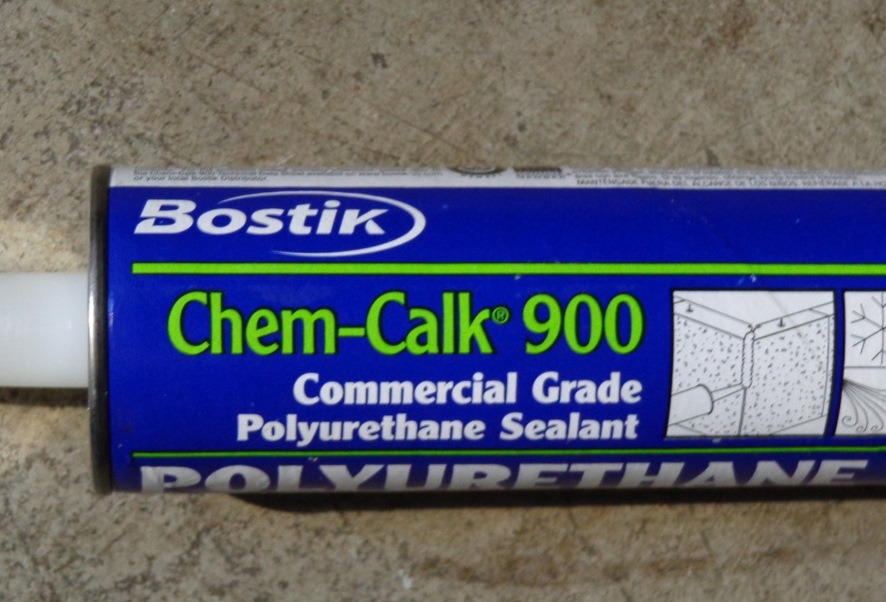
News & Views
Helpful Hatchery Hints-3
This is the third installment of Helpful Hatchery Hints submitted by Dan Magneson, Assistant Hatchery Manager at Quilcene National Fish Hatchery in Washington State. Dan and his colleague Paul Kaiser share their solutions to problems they have dealt with in their day-to-day hatchery operations. I am grateful to Dan for his continued assistance in putting these articles together, and we will welcome contributions from other hatcheries and aquaculture facilities. Let us hear your stories about the ideas that made your operations more effective and efficient.
Chem Calk 900
Dan has added some additional comments on Chem Calk 900 (by Bostik) that they use to seal cracks in their raceway expansion joints as we described in the last issue of HI. The smaller the fish you are ponding, the more important it is to fill even the smallest gaps, and Dan and Paul have had good luck with this product. It lasts for a long time without peeling or cracking, but it’s important to note that the concrete surfaces must be completely dry before it is applied. It can be purchased online and comes in several colours, but their choice has always been “stone”, which is a natural, light colour that contrasts with any holes or cracks that need repair. Do not choose black or another dark colour that would make any new gaps much harder to detect. A battery-powered caulking gun will make the caulking job much easier if there is a lot to do. You can often force the less-expensive expandable lengths of caulk backing or foam rope (“Caulk Saver”) into the gaps and then seal them in with the more-expensive caulk.
Fork-lift/Pallet Jack
If you’re tired of having to kick the forks on fork-lifts into different positions, you may be able to get a “fork positioner” option when buying a new machine. It is easier on your ankles to adjust the position of the forks hydraulically, without having to leave the seat.
Dan and Paul have discovered another nice thing to have: an electric pallet jack. This lifts the load itself and then powers/drives the wheels, These are handy to have around when unloading large feed deliveries, especially if the surface is not flat or you have to go up an incline or over a “hump” in the road.
Keeping critters at bay
Animals preying on fish in raceways when staff are off-duty tend to habituate rapidly to radios playing overnight, fake owls and the like. Dan has had better luck with his own critter-scarer, which has kept them at bay somewhat longer than other deterrents. He cut up pieces of a broken anodized aluminum pond broom handle, drilled holes near one end, then strung them from a wire under a sawhorse with the bottom ends of each piece resting against a piece of rebar.
He arranges a RainBird-style sprinkler nearby so that when it’s turned on the pieces of broom handle are kicked upward when the spray hits them. As the sprinkler continues its rotation the tubes falls back down against the rebar with a loud metallic clang. (The shiny surface of the aluminum might also flash in any available light, too.) Predators don’t seem to like that constant noise and motion; it makes quite a racket!
Measuring boards
How many measuring boards currently in use are made of rotting wood held together with rusty screws? Acrylic plastic sheets don’t warp or rot and are easily disinfected. You can get them (3M is one manufacturer) at places like Home Depot. Use a band saw to cut the plastic into the sizes you want, but leave the plastic film or backing on the acrylic as you cut. It helps prevent chipping along the edges. But peel it off before you glue the parts together. There are several acrylic glues to choose from.
Cut a sheet of millimeter graph paper to size, then take a clear plastic report cover and cut that to size. These items are easy to find at an office supply store. Spread a thin layer of clear silicone on the measuring board where the graph paper will sit atop the acrylic, and smooth it down. Then spread another thin layer of silicone atop the graph paper and smooth the transparent report cover over it. Use a wide putty knife to spread the silicone as evenly and thinly as possible to prevent lumps and bumps on the measuring surface.
An improvement over the example in the picture would have the numbers closer to where the tail of the fish would be, rather than along the bottom. This would be easier to read.
For more information contact Dan at: dan_magneson@fws.gov.
Send us your tips. If you have any special tips or tricks that help make your hatchery operations more successful, or at least easier, please send them along to the editor, Peter Chettleburgh (peter@capamara.com) or Dave Scarratt (scarratt@ns.sympatico.ca) Thank you.
April 2, 2018 By David Scarratt
 Chem Calk 900 (by Bostik) is used to seal cracks in raceway expansion joints.
Chem Calk 900 (by Bostik) is used to seal cracks in raceway expansion joints. Print this page





